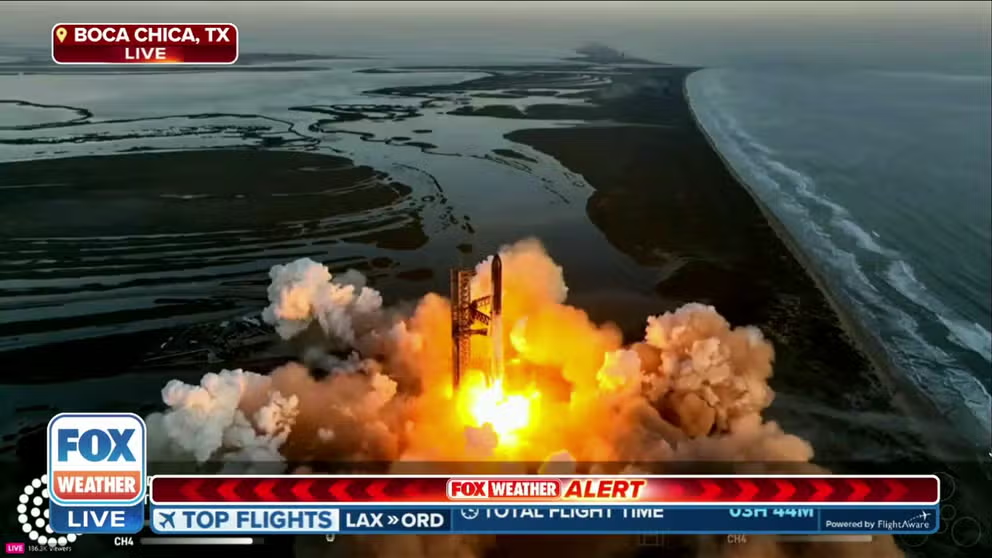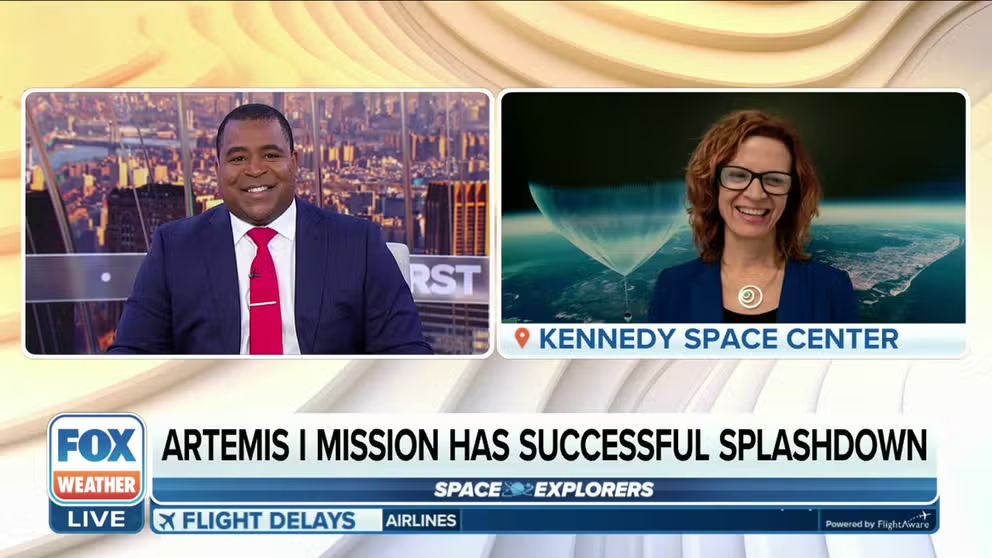2024 rocket launch schedule shows continued steady pace of blast-offs
Space companies such as SpaceX, United Launch Alliance and others have launches planned during the year. These missions will send everything from satellites to humans into space.
SpaceX Starship second launch delivers excitement, reaching edge of space
SpaceX delivered on its promise of excitement when it launched the Starship spaceship from South Texas on Saturday.
The new year will feature rocket launches from both coasts and engage numerous federal agencies and private companies that will deliver everything from satellites to humans to space.
In 2023, the U.S. saw more than 100 launches, setting a new record for activity. Many of the rockets were operated by Elon Musk’s SpaceX, and a repeat is in the cards for 2024.
Poor weather over Florida’s Space Coast appears to have resulted in a backlog of flights that have been moved into the new year.
A launch window depends on whether the rocket and payload are ready and if the weather will cooperate with stringent criteria.
The U.S. Space Force’s 45th Weather Squadron based on Florida’s Space Coast is tasked with providing weather assessments for rocket launches from two of the country’s busiest sites – the Cape Canaveral Space Force Station and the nearby Kennedy Space Center. Suitable weather criteria for each rocket vary, but generally speaking, thunderstorms must be at least 11 miles away, and sustained winds need to be below 30 mph. Criteria exist for nearly every aspect of the troposphere, including for speeds of upper-level winds.
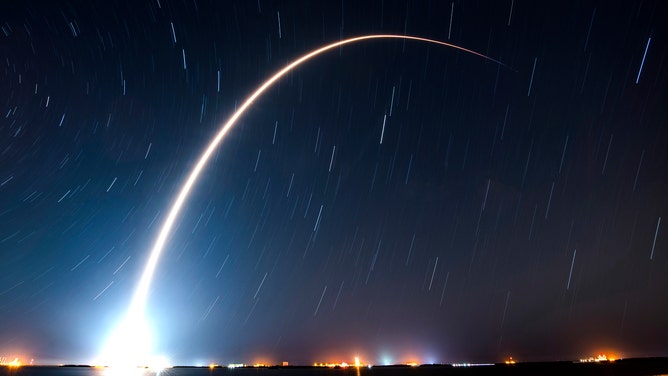
A SpaceX Falcon 9 rocket streaks across the Florida sky on Dec. 28, 2022, marking the company's 60th rocket launch of the year. (Image: SpaceX)
(SpaceX)
Due to the sophistication of the spacecraft, delays are common to ensure scientists minimize potential risks.
Below is the initial list of missions to be on the lookout for in 2024. As the year progresses, dozens of rocket launch attempts will be added to the schedule by organizations such as NASA, SpaceX and the United Launch Alliance.
Dates of the planned launches routinely change, so keep up-to-date with NASA's launch and landing calendar to ensure you don’t miss a spaceflight.
SATELLITE IMAGES GIVE UNIQUE PERSPECTIVE OF DISASTERS FROM SPACE IN 2023
2024 rocket launch schedule:
Jan. 3: SpaceX Falcon 9: Ovzon 3 (uncrewed mission)
Location: Cape Canaveral Space Force Station, Florida.
Description: This planned launch has faced months of delays. In December, poor weather over the launchpad was cited as the reason for delays. The rocket will deploy a satellite for European communications company Ovzon.
"Launch of Ovzon 3 is now targeted for early January 2024 due to continuous unfavorable weather and as a result of shifts in the launch schedule. While weather is out of our control, the spacecraft remains healthy, and we continue to work closely with SpaceX to prepare for launch in early January. This shift does not affect the roll-out of our unique next generation SATCOM-as-a-Service offerings", Per Norén, CEO of Ovzon, said in a statement.
Jan. 8: United Launch Alliance: Vulcan Centaur rocket (uncrewed mission)
Location: Cape Canaveral Space Force Station, Florida.
Description: This planned launch has faced years of delays. This certification flight will have two major payloads: a lunar lander and cremated remains. NASA said the Peregrine lunar lander mission will study the Moon’s exosphere, thermal properties, magnetic fields and radiation. The ashes are part of Celestis, Inc’s memorial flights. The cremated remains of Star Trek actress Nichelle Nichols will be one of more than 150 capsules aboard the inaugural Vulcan Centaur flight.
Astrobotic, the company behind the lunar spacecraft, is one of two companies vying to become the first private company to land a craft on the Moon.

The United Launch Alliance (ULA) Vulcan rocket successfully conducts a Flight Readiness Firing (FRF) at Cape Canaveral Space Force Base, Fla., on June 7, 2023 in preparation for the inaugural flight.
(ULA / FOX Weather)
Jan. 17: SpaceX Falcon 9: Axiom Mission 3 (crewed mission)
Location: Kennedy Space Center, Florida.
Description: The first all-European commercial flight mission will launch four people to the International Space Station. The excursion is expected to last two weeks, with a splashdown off the Florida coast.
Jan. 29: SpaceX Falcon 9: Northrop Grumman Cygnus cargo mission (uncrewed mission)
Location: Cape Canaveral Space Force Station, Florida.
Description: Cygnus NG-20 will carry supplies and equipment to the International Space Station. This will be Northrop Grumman’s twentieth resupply mission and the second arrival of a spacecraft to the ISS during the first month of the year.
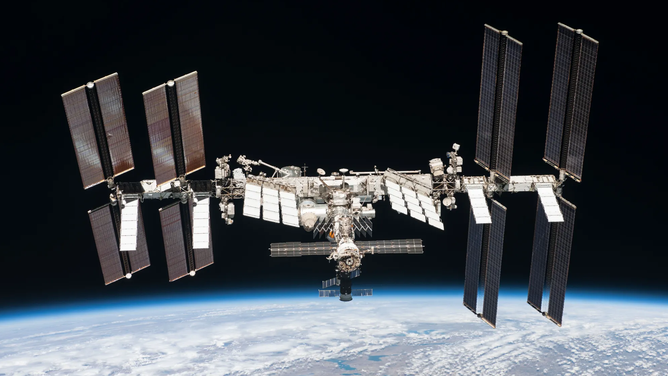
The International Space Station.
(NASA)
SEE THE OBJECTS HUMANS LEFT BEHIND ON THE MOON
Feb. 6: SpaceX Falcon 9: NASA PACE mission (uncrewed mission)
Location: Cape Canaveral Space Force Station, Florida.
Description: NASA’s Plankton, Aerosol, Cloud, ocean Ecosystem (PACE) observatory spacecraft is set to launch aboard a SpaceX rocket in early 2024. NASA says the mission will conduct research on how the ocean and atmosphere exchange carbon dioxide. Additionally, the mission will monitor air quality and the health of the oceans.
Mid-February: SpaceX Falcon 9: Intuitive Machines lunar mission (uncrewed mission)
Location: Kennedy Space Center, Florida.
Description: The planned launch has faced years of delays, and most recently, Intuitive Machines, Inc. has said poor weather in Florida has pushed SpaceX’s entire manifest behind schedule. The IM-1 mission will release a lunar lander near the south pole of the Moon. Depending upon the success of the first mission, a second lunar lander mission, known as IM-2, could happen as early as the summer.
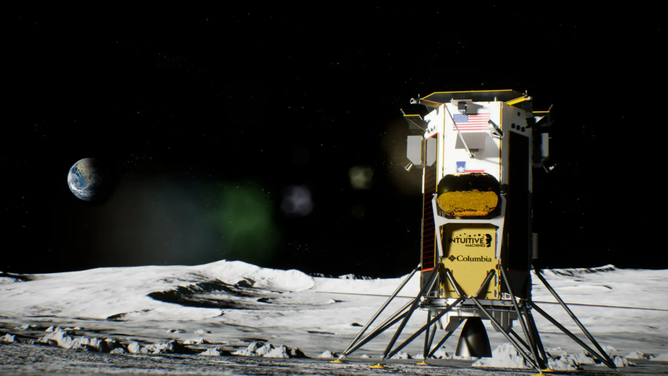
Concept image of Intuitive Machines lander for the IM-1 mission.
(Intuitive Machines / FOX Weather)
March: SpaceX Falcon 9: United States Space Force mission 124 (uncrewed mission)
Location: Cape Canaveral Space Force Station, Florida.
Description: SpaceX will launch a mission for the U.S. Space Force and the Missile Defense Agency. Due to national security implications, not much is publicly known about the payload.
"We work closely with our launch service providers and mission partners to ensure launch capability exists to get our critical payloads to orbit on-time and without failure," Space Systems Command Col. Chad Melone, said in a statement. "ULA and SpaceX have highly capable launch systems and we have full confidence that they will meet our needs for the eight missions we ordered…."
March: United Launch Alliance Atlas 5: USSF 51 (uncrewed mission)
Location: Cape Canaveral Space Force Station, Florida.
Description: This mission was contracted out by the U.S. Space Force and designated as a National Security Space Launch. The Space and Missile Systems Center (SMC), in coordination with the National Reconnaissance Office (NRO), was ULA 11 mission, while SpaceX received 10 launches. Due to the national security aspects of the mission, only limited information is available.
March: United Launch Alliance Atlas 5: ViaSat-3 (uncrewed mission)
Location: Cape Canaveral Space Force Station, Florida.
Description: A global communications company based in California will launch the second of three satellites for its global constellation. The first satellite for the network was successfully launched in May 2023 on a SpaceX rocket. Viasat, Inc. said the increase in capabilities will increase the coverage of its high-quality, low-cost internet.
IMPROVED SPACE WEATHER FORECASTS NEEDED TO AVOID DESTRUCTION OF SATELLITES
April: United Launch Alliance Atlas 5: CST-100 Starliner test flight (crewed mission)
Location: Kennedy Space Center, Florida.
Description: An inaugural test flight will fly astronauts aboard Boeing’s CST-100 Starliner spacecraft to the International Space Station. Astronauts Butch Wilmore and Suni Williams will perform the first crewed mission that has faced delays since 2020. After a brief stay at the ISS, a landing is expected to take place at the White Sands Missile Range in New Mexico.
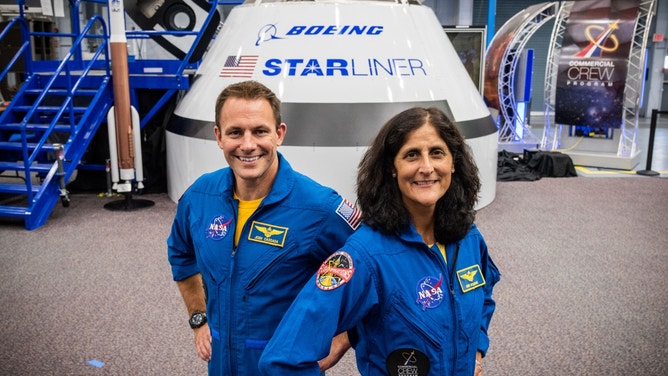
Josh Cassada and Sunita Williams, were selected for the first mission to the International Space Station on Boeing's Starliner capsule.
(NASA)
April: SpaceX Falcon 9: Polaris Dawn (crewed mission)
Location: Kennedy Space Center, Florida.
Description: SpaceX will launch a private mission for Shift4 Payments CEO Jared Isaacman. On board will also be pilot Scott Poteet, Sarah Gillis and Anna Menon. The crew is expected to spend less than a week in space before splashing down off the coast of the southern U.S.
"The mission profile of Polaris Dawn affords us some great opportunities to expand our collective knowledge about the human body in space and associated applicability here on Earth. Our science and research agenda will enhance the body of knowledge for future long-duration spaceflight which will take us back to the Moon and on to Mars; as well as progress our knowledge and understanding for humankind here on Earth. The Polaris Dawn team along with the exceptional science and research team at SpaceX cast a wide net to find the best experiments to fly with us," Jared Isaacman, mission commander, said in a statement.
April 30: SpaceX Flacon Heavy: GOES U (uncrewed mission)
Location: Kennedy Space Center, Florida.
Description: The final satellite in the GOES-R series will launch aboard a SpaceX Falcon Heavy rocket during the spring of 2024. Once in orbit, it will be renamed GOES-19 and operated by NOAA. NASA says its instruments will provide data for weather forecasts, monitor hazards and observe solar activity.
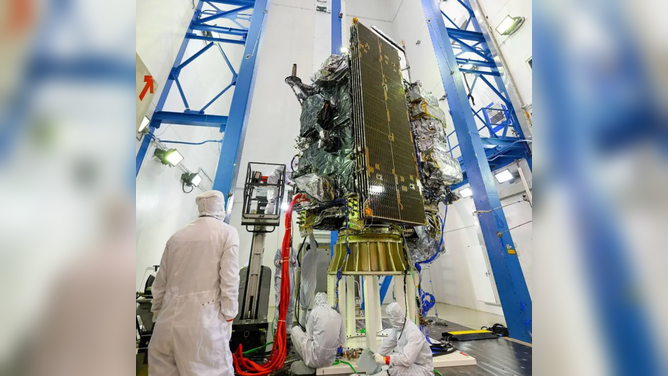
NOAA’s GOES-U satellite construction at Lockheed Martin Space’s Littleton, Colorado.
(NASA)
5 OF THE MOST IMPORTANT ROCKET LAUNCHES IN THE HISTORY OF SPACEFLIGHT
June: SpaceX Falcon 9: Türksat 6A (uncrewed mission)
Location: Cape Canaveral Space Force Station, Florida.
Description: SpaceX will launch a communications satellite on behalf of Türksat, a Turkish communications company. Turkey’s Space Technologies Research Institute said the project has been in the works since 2014. The planned launch will not be the first time SpaceX and Turksat have worked jointly on a mission. In 2021, a Falcon 9 rocket launched a communications satellite into space.
June 30: Rocket Lab electron orbital rocket: 6x HawkEye 360 (uncrewed mission)
Location: Wallops Flight Facility, Virginia.
Description: California-based Rocket Lab will continue the deployment of satellites for HawkEye 360. HawkEye 360 is an analytics company based in Virginia, and the summer event would be the second of three planned missions.
According to Rocket Lab, its lightweight rocket is cost-effective, which reduces the financial burden on companies interested in reaching low-Earth orbit.
Second half of 2024: SpaceX Falcon 9L Arctic Satellite Broadband Mission (uncrewed mission)
Location: Vandenberg Space Force Base, California.
Description: Viasat, Inc., in coordination with companies and agencies in Norway, is working on two satellites that will provide high-speed broadband in the Arctic region and enhance communications. The satellites are known as ASBM-1 and ASBM-2 and are expected to be in operation by the end of the year.
"With both satellites through the thermal vacuum test, we are really closing in on making this strategically important capability real. We have seen an unprecedented collaborative effort with Viasat, the US Space Force, our Norwegian Armed Forces and with Northrop Grumman, and are all looking forward to providing the first dedicated broadband services to users in the real Arctic," Kjell-Ove Skare, Space Norway program director, said in a statement.

ASBM-1 satellite in testing at Northrop Grumman’s manufacturing facility in Dulles, Virginia.
(Northrop Grumman / FOX Weather)
August: SpaceX Falcon 9 rocket: SpaceX Crew-9
Location: Kennedy Space Center, Florida.
Description: Two American astronauts, a Russian cosmonaut and an astronaut from Japan, will compose the ninth mission aboard a SpaceX spacecraft to the ISS. The mission is expected to last several months. A Russian Soyuz spacecraft is expected to launch one American and two cosmonauts during the fall. The next mission involving NASA astronauts launching from U.S. soil could happen in late 2024.
Oct. 10: SpaceX Falcon 9: NASA Europa Clipper (uncrewed mission)
Location: Kennedy Space Center, Florida.
Description: The launch of an orbiter named Europa Clipper is set to happen in October and take around five years to reach its destination. The mission is expected to investigate Jupiter’s moon, Europa, and help scientists better understand the moon and its icy planet.
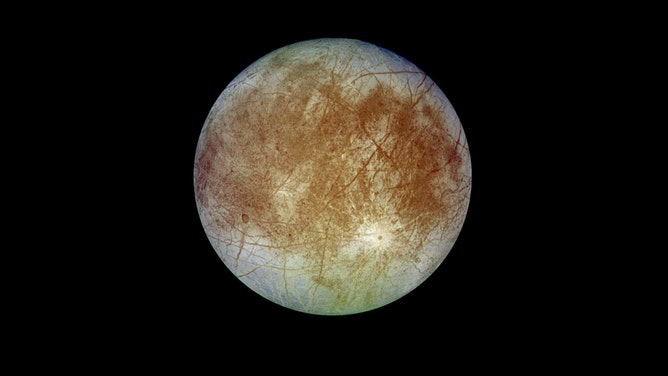
Europa orbits Jupiter every 3.5 days
(NASA)
Late 2024: SpaceX Falcon 9: Axiom-4 (crewed mission)
Location: Kennedy Space Center, Florida.
Description: Axiom Space expects to operate its fourth private astronaut mission by the end of the year. Similarly to Ax-3, the mission is expected to last about two weeks with a visit to the space station. During the rendezvous, the crew will complete a variety of experiments and research before splashing down off the Florida coast.
November: SpaceX Falcon 9: NASA Volatiles Investigating Polar Exploration Rover (uncrewed mission)
Location: Kennedy Space Center, Florida.
Description: NASA plans to launch its Volatiles Investigating Polar Exploration Rover, or what is known as VIPER, by the end of the year. The rover will investigate the Moon’s South Pole during a 100-day mission. The space agency said data will be critical in determining the distribution of water on the lunar body and help determine the resources available for future human space exploration.
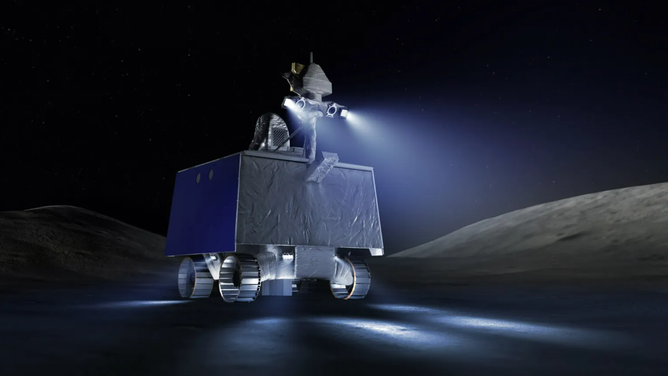
NASA's Artemis lunar rover, the Volatiles Investigating Polar Exploration Rover (VIPER)
(NASA)
November: NASA Space Launch System (SLS) rocket: Artemis II (crewed mission)
Location: Kennedy Space Center, Florida.
Description: A crew of four astronauts will launch from Florida aboard a Space Launch System (SLS) rocket and Orion spacecraft on a mission around the Moon. The first Artemis test flight was completed in 2023 and, according to NASA, is capable of launching humans into space. The mission is expected to last less than two weeks and return to Earth with a splashdown off the U.S. coast. The crew of four consists of commander Reid Wiseman, pilot Victor J. Glover, mission specialist Jeremy Hansen and payload specialist Christina Koch. If the mission faces significant delays, similar to those experienced in the runup to Artemis I, the launch date could be pushed into 2025.
What successful Artemis I mission splashdown means for future of space exploration
Jane Pointer, Space Perspective’s Founder and Co-CEO, talks everything from Apollo 17 50th anniversary to 2023 trends and predictions for space.
